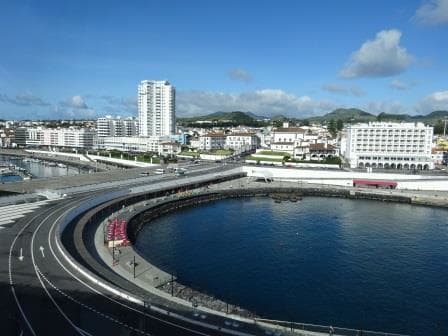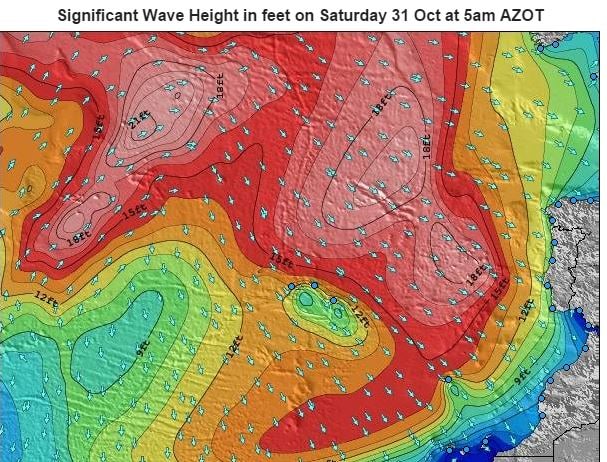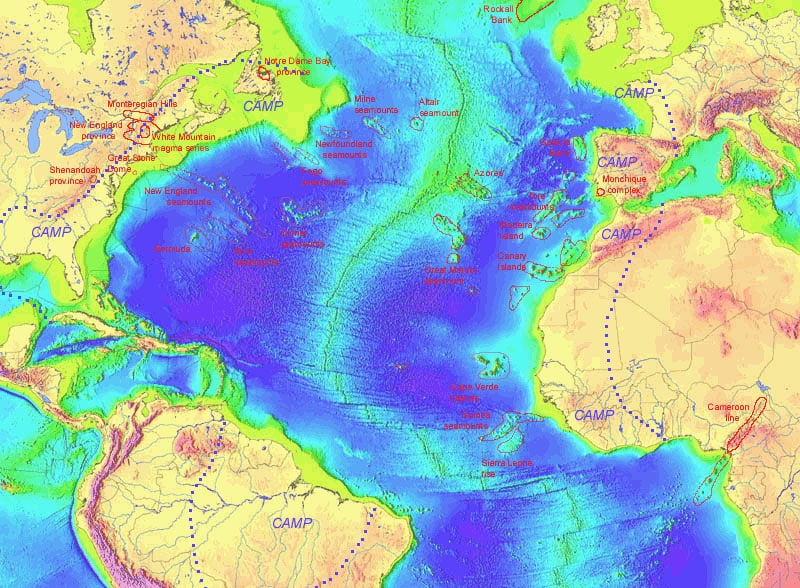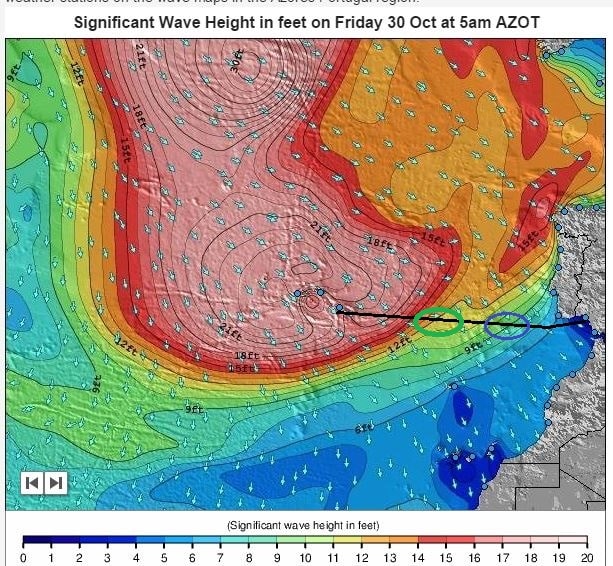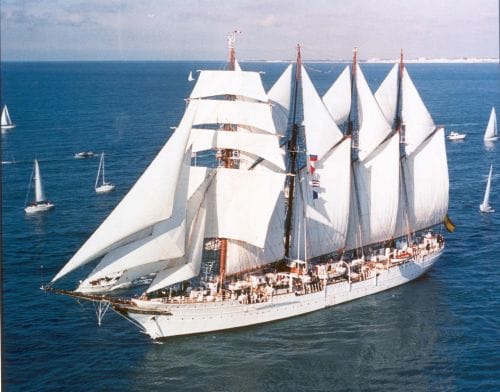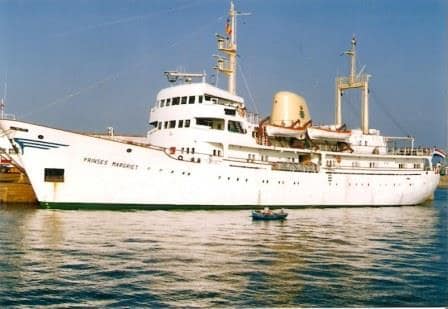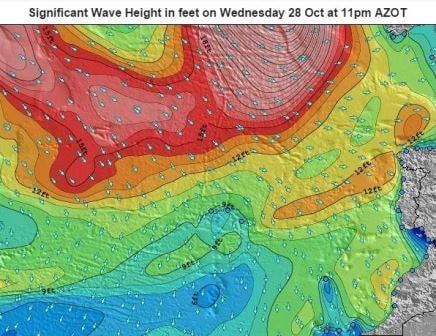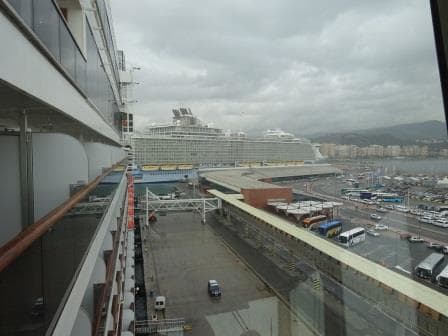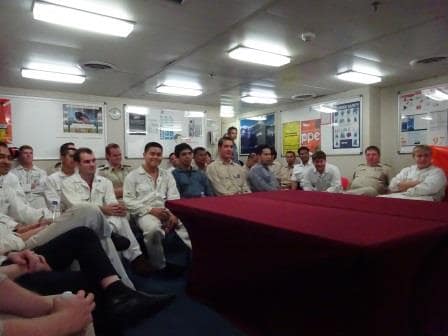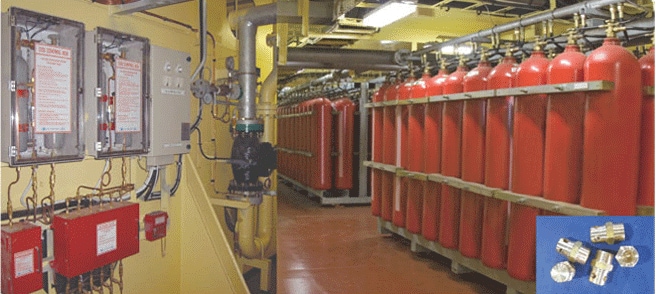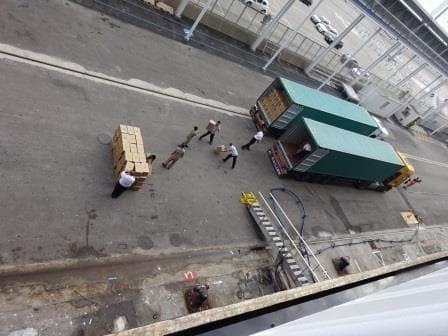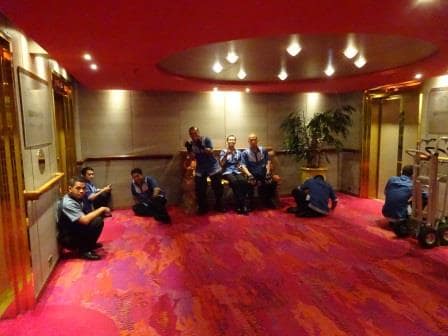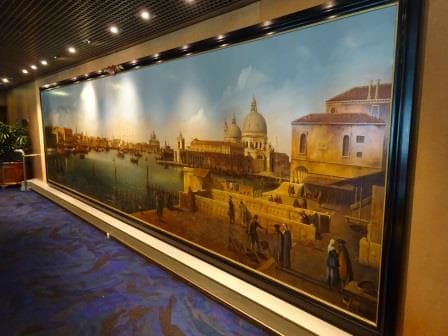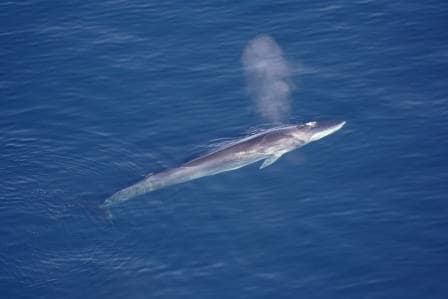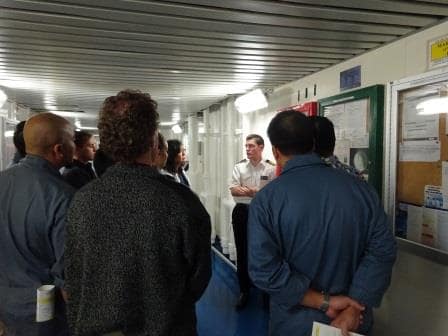We approached Horta in the very early morning and dropped the anchor outside the harbor, as close as safely possible to create the shortest tender distance. The port installed fairly recently a new pier which can handle ships up to 800 feet without much of an issue. Anything over is “at the Captains discretion” as they call it. The ship would fit in but the Zuiderdam with 962 feet would have too tight a space to play around in. So it was the better option to anchor and run a tender service. The swell was very low and thus a regular tender service could be safely conducted.
To my amazement the Cruise Director had to make several announcements to get everybody going. I had expected that our guests would have been piling into the show lounge as soon as possible to get a tender ticket to go ashore, as today was only a short stop but this was not the case. Maybe they had been there already, maybe because it was Sunday and everybody was in church, maybe because they thought it would be the same as Ponta Delgada; I do not know but nobody was in a hurry it seemed.
My job this morning was to train a group of Dining room and Lido stewards in how to handle grumpy and un-willing guests during an emergency. ………….. And during the Passenger Safety Briefing before the cruise starts as well. As part of our system of getting everybody as quickly as possible to the muster stations when the alarms go, we have groups of crew members whose task it is to find any stragglers, nay-sayers or those who got a last minute accident to their cabin or the lifeboat station. These groups are called Sweep Teams. There is one for the crew areas, the Crew Sweep Team and there is one for the Guests, called the Passenger Sweep Team.
They have a system whereby 2 groups of four walk passenger decks. One group of four on the portside and one group of four on the starboard side. They cross each other at the bow end of the ship and then walk back again. Each group has a deck plan for verification and they check each space, each open locker and each rest room to ensure that everybody is indeed following the Captain’s orders. If somebody is found, he/she is politely but firmly ordered to get going and to do as he/she has been told. I do not know how easy this will be in a real emergency as we can only train for that and hope it will never happen but during the Passenger Safety Briefing before the cruise starts it can be difficult.
Almost everybody will “march” to the lifeboat stations as ordered, but…………….there are always a few. Some of them are multiple cruisers who are getting fed up with the same routine every cruise and think they are exempt after so… many 100’s of days of sailing with HAL and then there are some who do not speak any English and try to use that to their advantage during drill time. (Somehow they always seem to be able to read and order from the menu………….) As they all know that they will be kicked out of their cabins by the cabin stewards, they try to hide in the public rooms. And there they come across the Sweep Team.
And the “sweepers” were telling me this morning, they sometimes had to try to get them out of the lounges and even out of the Rest Rooms. Some went as soon as they were directed; but some were sometimes obnoxious and rude and refused to go. Not easy to handle for a Steward who has been trained to be forever polite and friendly. Thus this morning we went through the tricks of the trade and how to handle these guests. As we do a bit of acting it out and as it is US against THEM, there is always a good laugh when everybody relates their experiences and how they got this particular guest to the lifeboat station while the person was remonstrating all the way. There is more to a Dining room steward than just serving food. These guys have a very important job in an emergency as we want to ensure that nobody will be left behind.
We left Horta in the early afternoon and now we will be at sea until 08 November. Then we have a call at Nassau in the Bahama’s and the next day the cruise finishes in Fort Lauderdale. The weather looks good for the coming days, it looks like that this wave front to the North which I mentioned yesterday will indeed not reach our course line and thus we are looking forward to a nice Ocean Crossing.

